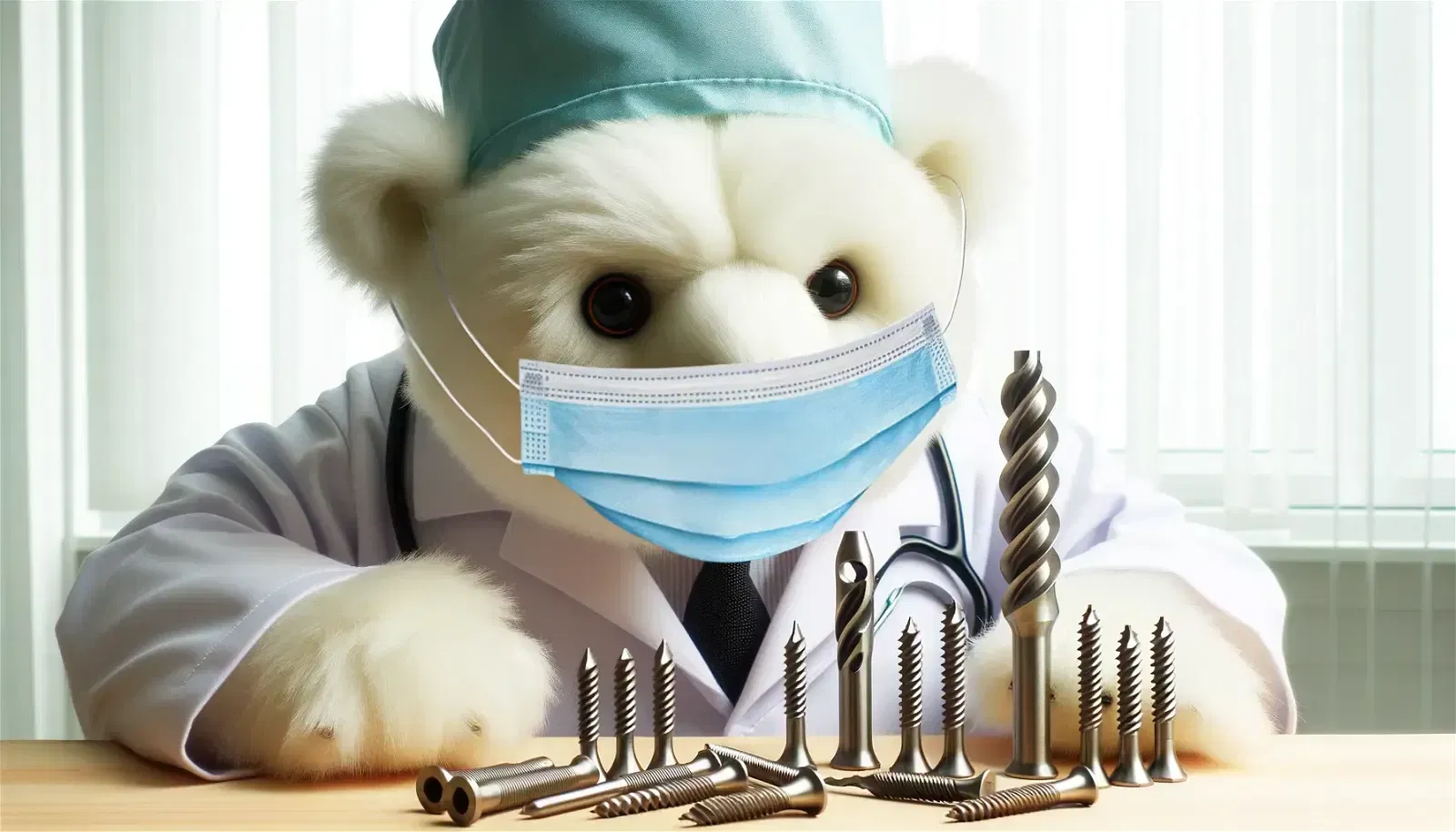
Threads in medical technology - bone screws & co.
Modern medicine continuously astonishes us with innovations and procedures that appear almost futuristic. It almost feels as though any part of the human body can be replaced or at least repaired. Nowadays, doctors can resolve many health issues that would have resulted in severe disabilities or even death just a generation or two ago.
While we haven't quite reached the realm of the cyborg—a fusion of human and machine—technology is an integral part of modern medicine. Even manual tasks like drilling, sawing, and screwing have become common in operating rooms. This includes threading.
Both threading tools and threads are employed in numerous medical procedures, especially when components need to be held securely in place. But the applications of threads in medical technology don't end there. Of course, such a delicate field imposes unique conditions. Let's explore the varied uses of threads in medical technology!
What Matters in Threads for Medical Technology
If you've ever visited a hospital, you'll understand that threads in medical technology have to meet special standards. Of course, your doctor doesn't just pop over to the local hardware store to pick up surgical tools. So, what's crucial for threads and threading tools in medical technology?
Biocompatibility
All threading tools and threads in medical technology that come into direct contact with or remain in the body must be highly compatible with it. An allergic reaction could be catastrophic for an already weakened patient. Materials that meet these criteria are termed biocompatible because they don't adversely affect living tissue.
Hygiene
Hygiene is paramount in any hospital or operating room. Germs and bacteria can spread unnoticed and cause devastating harm. To prevent this, thorough disinfection is a must. Threads in medical technology must resist the sometimes aggressive disinfectants and be made of materials that are easily cleaned.
Chip Evacuation
If you've done some DIY work, you'll know that debris can be annoying and cause contamination issues. Now, imagine working on the human body! Whenever threading tools are employed in medical technology, a smooth and predictable chip evacuation is essential to ensure no foreign materials end up where they shouldn't.
Quality
Of course, you'll pay attention to the quality of your threading tools even if you're not a doctor. However, for threads in medical technology, impeccable tool quality isn't just desirable—it's absolutely necessary. Smooth surfaces, precise cutting geometry, and break-resistant tools ensure surgeries go smoothly.
Lifespan
Especially for components with threads in medical technology intended to remain in the body for extended periods, a long lifespan is vital. After all, the goal is to restore patients' health and joy in life. Regular hospital visits for replacements or adjustments would undermine this objective.
Materials Used in Threads for Medical Technology
To reliably meet the mentioned requirements, specialized materials for threads in medical technology are essential. They need to be biocompatible, robust, and durable. For implants, pure titanium or a titanium alloy is commonly used. Titanium is generally well-tolerated by the human body and allergic reactions or defensive responses are rare. Stainless steel and cobalt-based alloys are also used. Even though many people have nickel allergies, the minute amounts of nickel released from medical threads typically pose no negative effects on the body.
Applications of Threads in Medical Technology
Struggling to picture a doctor using a screw tap? Let's approach it from a practical standpoint. Here are a few typical examples to help you understand the importance of threads in medical technology.
Dental Implants
Dental implants are the quintessential example of threads in medical technology. First, a hole is drilled into the jawbone. The implant body, which serves as an artificial tooth root, is then screwed into this hole. Over time, it firmly integrates with the surrounding bone tissue. The implant body has an internal thread, into which a neck part is screwed. This holds the crown, the artificial tooth. Thanks to threads in medical technology, dental implantation can be executed with relatively little hassle, ensuring patients don't need to worry about their new tooth's stability.
Bone Screws
While the term might sound a bit ominous, bone screws are invaluable tools in modern surgery. They are used when a connection between bone materials is necessary—a procedure called screw osteosynthesis. How and where bone screws are used depends on the type of injury. Often, breaks in areas like the head or foot that need stability for healing are fixed using bone screws, sometimes with the assistance of a washer. So, surgery can sometimes resemble a workshop procedure.
Heart Pump
A slightly different example of a thread in medical technology is a heart pump. Some models feature a movement thread. A tiny ball screw mechanism drives a pump that keeps the heart beating. If anyone ever doubted it, threads truly can be lifesavers!
While we at BAER might not offer heart pumps, we know our way around threads! Check out our online store for a wide range of precisely crafted threading tools suitable for all purposes.
